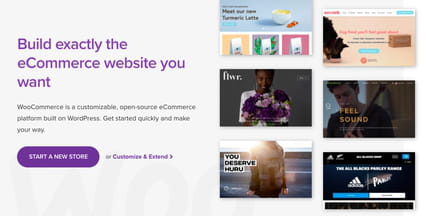Top e-commerce platforms in 2022

Online shopping has become so natural that sometimes a physical trip to the store can be uncomfortable, especially during the pandemic. E-commerce is growing faster than ever before and a lot of people are moving their businesses onto the web. If you are wondering how to open your own online shop, don't worry, it's simple and quick. In this article, we compiled the best platforms to open an online store.
What do you need to know about e-commerce?
Many businesses have moved towards digital commerce due to the technological rise, the financial crisis, and, of course, the ongoing pandemic. Opening an e-business is easier than holding a physical shop or hair salon, for example. However, you still need to think twice and create a strong value, calculate margins and profit, and build trustworthy relationships with your partners and customers. To better understand, you can read our comprehensive article about e-commerce.
Whether you open an online grocery store, watch brand, flower shop, or an e-learning course, nowadays you need a proper website, so your customers can quickly adapt to it and understand the interface, as well as all its features, to fully immerse in what you sell.
Opening an e-shop can seem easy, however, it’s crucial that you choose the right platform to open an e-shop that will be successful. Different e-commerce platforms suggest various themes, interfaces, styles, pricing, and color schemes as well as different functionality and special offers. Here are the best ones on the market.
Shopify
Shopify is the most popular e-commerce platform globally: it has more than 2.1 million users. With it, you can easily create your e-shop using various templates, themes, and styles. The subscription plan starts from $29 per month. Shopify also has cooperation contracts with different shipping services such as DHL and UPS, so if you know already that you will need long-distance shipping providers, keep in mind that with Shopify, you can get a discount. Another valuable feature of this platform is that it has 24/7 customer support which can be useful in case your website unexpectedly starts bugging.
Wix
Wix is popular not only for building online shops but also for simple websites such as blogs, e-magazines, personal portfolios, etc. The platform is available in more than 15 languages, so you can get proper support whenever you need it in your language. It has Corvid developer integration so even if you don’t like how your template looks, you can easily change the code and improve it. It has both free and paid plans, the cheapest starts at $13/month. The only disadvantage is that it doesn’t support Apple Pay and has no trial version.
BigCommerce
BigCommerce is not only a handy platform but also a community of e-commerce professionals. It’s the cheapest plan costs $29.95 per month and gives you frontend and backend support, powerful analytics, international support, SEO, discounts and coupons generation and a complete package of B2B support.
Magento
Magento is the best solution for someone opening an online store with the help of a developer, because it is highly customizable but at the same time, not so easy to use as its alternatives if you don’t know how to write code. In Magento Marketplace, you can purchase and install some additional plugins and features such as PowerSync Quickbooks for accounting and finance and Zendesk for customer support.
WooCommerce
WooCommerce is an open-source plugin for WordPress with which you can transform your website into an online shopping platform. You can either use free themes or purchase more complicated ones for a fee (starting from $59). The interesting thing about this plugin is that it offers many additional extensions to make the interface of your e-shop simpler and more intuitive. You can add Etsy for better sales or Mailchimp to create a newsletter.
SquareSpace
SquareSpace is one of the handiest providers for e-commerce amateurs who don’t yet know how to manage an e-shop. You can either use ready-made templates or tweak your website using JavaScript, CSS, and other coding languages. The cheapest plan costs $18/month and includes various features such as abandoned cart recovery, automatic shipping rate calculations, promotions, banners, and much more.
Google Shopping
Once you have opened your e-shop and would like to enlarge your audience and make your product even more popular, you can use the Google Shopping platform and its new Buy on Google experience. You simply need to connect your inventory and customers will be able to find your products by simply typing their names into Google Shopping. The procedure is free and as simpler than ever before.
Facebook Shops
Another good solution to push your business and sales forward is connecting your online store to the Facebook Shops platform. It can give you a bigger audience and more recognition on social media, as well as boost your sales. You can learn more about how to open an online store with Facebook Shops.



